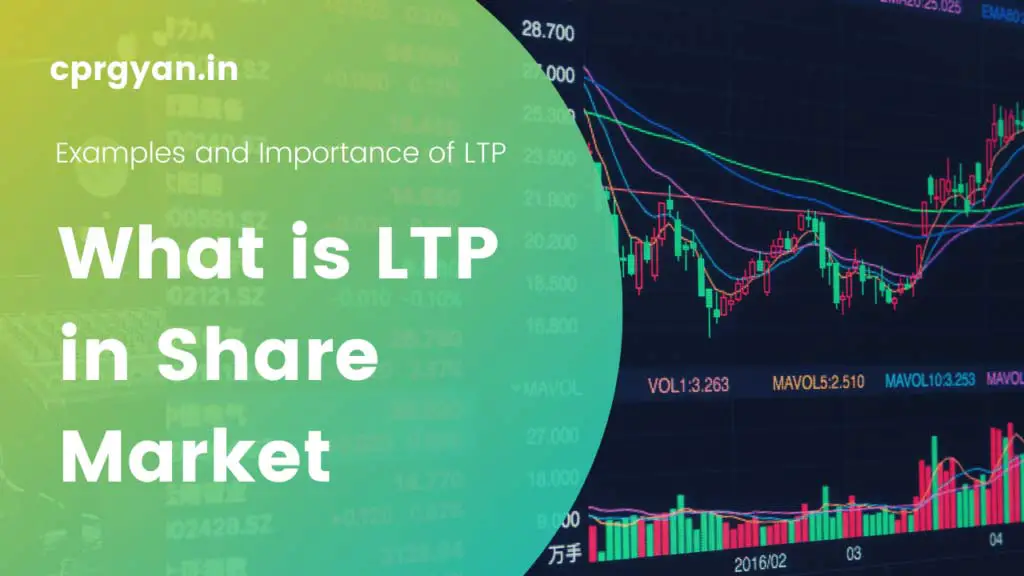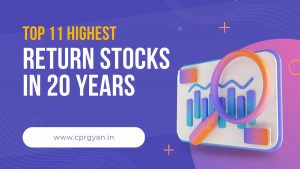In this blog post we will discuss on LTP, its meaning, full form and importance in Share market. This is a common term that we traders use everyday while trading, but only a few of us understand the importance of LTP in Share market.
What is LTP in Share Market?
LTP stands for the Last Traded Price of a share, and it can be used to determine if shares are priced higher or lower than the current market trend. If you are wondering what LTP in share market means for your trading strategy, read on!
Stock prices are constantly fluctuating in the market, and these fluctuations are based on current events. At any point in time, there is an LTP for each share that you can track to determine if buying now will be profitable or not.
When looking at this number alone, however, it isn't always clear whether shares are overpriced or undervalued because there are also other factors to consider.
For example, if the share price is moving towards an upward trend but the last trade LTP number isn't increasing at a fast pace, it could mean that there are still many shares remaining in supply and demand.
If you want to make trades based on this information alone, take note of what time frame your LTP is based on.
A one-minute or five-minute LTP can provide more accurate results than an hourly price because it will reflect the current market trend with greater accuracy.
Keep in mind that prices are constantly changing, so you may want to use this information as a guide rather than something concrete when making stock decisions.
How LTP is calculated in the share market?
The price of LTP totally depends on the current market sentiments. In the Share market, both buyers and sellers are consumers.
When a seller wants to sell the shares that he holds at a particular selling price and when any buyer offers the same price to buy those shares then this trade will get executed and the traded prices will be termed as the Last Traded Price or LTP.
In other words, for a trade to get executed the buyer should offer the same price as that of the seller. In case if there are no buyers who want to buy at this particular selling price then LTP will be zero or negligible.
The role of trading volume in determining the LTP
The trading volume plays a major role in determining the LTP. It has been seen that when trading volume increases then there is a change in price volatility and thus an increase or decrease can be observed in both supply & demand curve as well as the LTP number.
This happens because whenever there are more buyers than sellers present, it means that current prices will go up since there is pressure of buying.
On the other hand, if there are more sellers than buyers present then it means that current prices will go down since there is an increased selling pressure too.
Therefore, the trading volume plays a very important role in determining LTP which can also be taken as one of the most influential factors for stock price determination and stock price forecasting.
In a nutshell, the trading volume determines the LTP and also indicates whether there is increased pressure of buying or selling at current prices which can be taken as one of the most influential factors for stock market analysis and performance prediction.
The importance of LTP in the Share market
1. It helps to predict the share price value
LTP helps us to determine in which direction the price of any particular share is moving. A price range is a formal statement in which the seller informs the buyer that they will agree to sell or buy a specific stock at any price within a specified range.
For example, three sellers of a particular stock X have requested bids of Rs. 500, Rs. 501, and Rs. 505.
The buyers will accept a price of Rs. 500 at first, and if no more sellers are found for this stock at Rs. 500, they may raise their offer to Rs. 501.
The price of stock X rises to Rs. 501. The third seller, unable to find interested buyers at Rs. 505, would decrease his ask price to Rs. 501 based on the last traded price.
In a real stock market, hundreds of such transactions are completed simultaneously, and the price varies depending on the number of these trades. As a result, the LTP is a measure of real-time price movement.
2. Evaluate the appropriate ask or bid price
With LTP, placing a market order is easier since the selling or ask price and bidding or buying price will be in comparable ranges.
It also helps in the evaluation of prices at which a stock will be most readily bought (asking price) or sold (bid price).
However, because the stock market changes frequently, there is no assurance that sellers and traders will be able to execute a transaction at the desired prices.
3. Helps in easy forecasting of stock prices
LTP can be used to calculate the future price range. It is very helpful for investors, traders, and analysts as it helps them in easy forecasting of the stock prices.
In addition, LTP provides a fair idea about what price to offer or bid for future transactions and also informs if we are on track with our projections or not.
Lastly, using historical data patterns one can identify how much time remains before the existing trade gets executed at its current level, and also helps in calculating the future price range.
How to use LTP as a trading strategy?
We can trade with the help of LTP by placing Sell, Buy or Bid orders at the levels of LT prices for buying and selling stocks.
It is also possible to create an algorithmic strategy that can be used in day trading or swing trading by using LTP values as inputs into sophisticated mathematical models which are then utilized to generate buy/sell signals.
The advantage of this kind of trade with LTP is that we can identify the stages of buying and selling pressure in real-time which gives us an edge over other traders.
This strategy also helps to determine if a stock will remain as such or it may go up or down by keeping track of historical data patterns like LTP levels, market trends, etc.
By using this technique we can identify the most profitable stocks to trade on with better precision.
Today, LTP is used by many professional traders and investors as one of the key factors for determining their trading strategy.
Conclusions
LTP can help us to determine the right price range of stock, predict the future value of stocks, and help us in creating trading strategies.
LTP is one such metric that can be used for finding out whether an investor should buy or sell at current prices by determining the real-time pressure on buying/selling side.
The advantage of LTP is that it provides us with real-time data on stocks, which allows us to make an informed trading decision.
Also read: What is CE and PE? Meaning, Full Form with Examples
FAQs
What is the difference between the closing price and LTP?
The closing price is the last traded price of a security at the end of the day when transactions are completed. In contrast, LTP represents real-time trading data from continuous auctions in which buyers and sellers transact simultaneously.
What is ATP and LTP in the share market?
The term ATP stands for average traded price and the term LTP stands for the Last Traded Price. Both the terms are used in the share market to determine the real-time price movement of a stock.
What is LTP in Zerodha?
The term LTP stands for Last Traded Price and it is the same in meaning in Zerodha as the share market.




